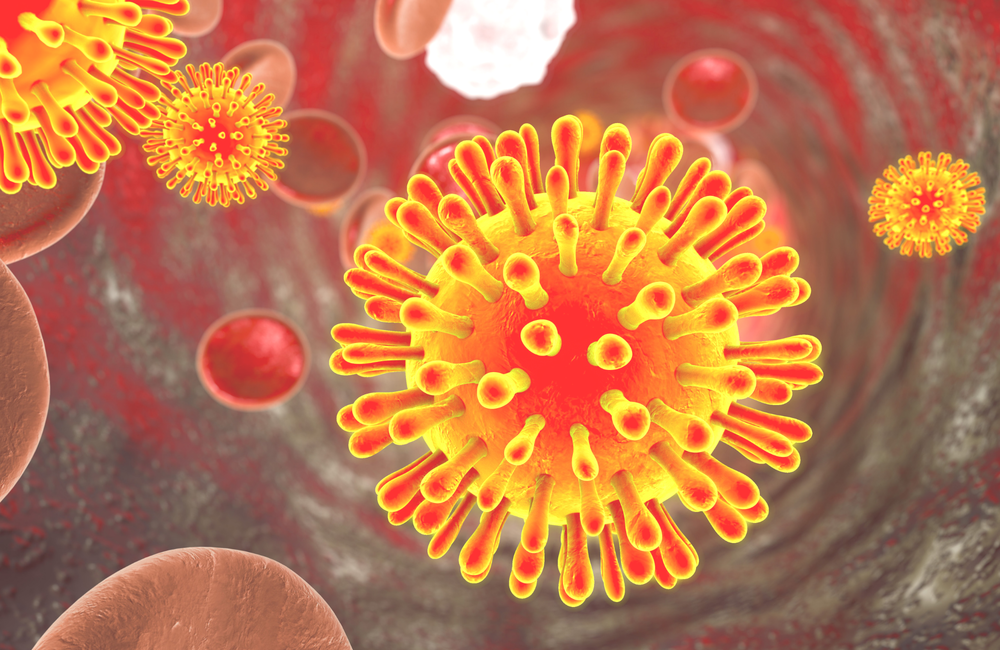
Testing proviral DNA for drug resistance can help to select new drug regimens that are better tolerated and easier to take in treatment-experienced people, while preventing a treatment switch leading to viral rebound, University of Arizona researchers report in the journal Open Forum Infectious Diseases.
Changing treatment to prevent long-term toxicities is becoming feasible for an increasing number of people on long-term HIV treatment as the number of drug options expands. There is also growing interest in reducing the number of antiretroviral drugs taken by people living with HIV, both to reduce the risk of long-term toxicity and lower the cost of treatment.
Treatment switches in people who have taken several previous HIV drug combinations should ideally take place after resistance testing to guide the choice of medication. But standard HIV resistance testing is carried out on blood sampled when viral load is above 500 copies/ml (detectable). Resistance testing using standard genotyping is not possible using samples from people with undetectable viral load (< 50 copies/ml).
A potential solution is to look for drug resistance mutations in latently infected CD4 cells. Proviral DNA in these cells provides an archive of previous viral replication, so if there has previously been resistance to a drug, there should be evidence of drug-resistant virus in proviral DNA.
Drug-resistant virus in proviral DNA could form the basis for viral rebound if latently infected cells containing drug-resistant proviral DNA become activated.
Although studies show that results of proviral DNA genotyping match those of standard genotyping, there is a lack of information about what happens after treatment switching if the new regimen is selected on the basis of proviral DNA genotyping.
To investigate this question, researchers from the University of Arizona looked at all treatment switches after proviral DNA genotyping between 2014 and 2017. They identified 59 people who were switched on the basis of proviral DNA genotyping results and who had follow-up information (approximately 8% of all patients seen in the clinic). A further 17 people underwent proviral DNA testing but did not switch treatment, for various reasons including testing having revealed multiclass resistance (24%) or confirmed susceptibility to the current regimen (18%).
The people who changed treatment were predominantly male (85%), white (66%) and living with HIV for over ten years (71%). Reasons for seeking DNA testing included having taken two or more previous regimens (46%), not having a full treatment history available (34%) and having had a recent viral rebound above 50 copies/ml but had insufficient virus levels for standard genotyping (36%).
Proviral DNA genotyping showed that 58% had resistance to an agent in one antiretroviral drug class, 34% to two drug classes and 10% had resistance to agents in three classes. Previous standard genotype results were only available for nine people, including two cases in which DNA genotyping failed to detect previously identified M184V mutations. Conversely, DNA genotyping detected resistance mutations in three cases that had not been recorded after standard genotyping, including integrase inhibitor resistance.
After switching treatment, 93% of those with viral load below 50 copies/ml maintained an undetectable viral load at their last follow-up visit and 10 of 14 people with a viral load above 50 copies/ml at the time of treatment switch subsequently resuppressed viral load. None of the people with detectable viral load developed new resistance mutations.
Detectable viral load after switching was associated with non-adherence and a viral load above 50 copies before switching.
Switching permitted a reduction in the average number of pills taken each day (from 3.48 to 2.05) and the average frequency of pill-taking (from 1.39 to 1.03 times per day).
More than half of those taking a protease inhibitor were able to stop it (34 took protease inhibitors before switching, 14 after) and the number taking an integrase inhibitor increased from 27 to 50.
Switching in this study did not increase the cost of treatment, although it was not cost-saving.
“Switching permitted a reduction in pill burden and switches to more favourable regimens.”
Proviral DNA genotyping may have reduced the vulnerability of regimens for a minority of people in the study population. After switching, the proportion of people with three or more active drugs in their regimen (genotypic susceptibility score of 3 or higher) increased from 56% to 69% (p = 0.39) while the proportion taking less than two active drugs (GSS < 2) fell from 14% to 3% (p = 0.031).
When should DNA genotyping be used? “It is unlikely that DNA genotyping will provide additional information in individuals receiving their first or second ART [antiretroviral therapy] regimen who have not experienced virologic failure,” say the authors. “DNA genotyping may be useful for ART-experienced populations with co-morbid conditions, multiple medication interactions…, difficulty accessing care, [or] patient hesitancy regarding ART switches.”
Proviral DNA genotyping may prove to be of value for people who want to switch to two-drug regimens. A variety of two-drug regimens have been tested as switch options in people who have suppressed viral load.
But two-drug regimens are especially vulnerable to pre-existing resistance to one of the agents, which is why clinical trials of two-drug treatment strategies have excluded people with drug resistance or a history of treatment failure. Further evidence is needed of the utility of proviral DNA resistance testing – especially for detection of the lamivudine resistance mutation M184V – for identification of robust two-drug regimens that will not be vulnerable to virologic failure due to archived drug resistance.
Ellis KE et al. Clinical outcomes following the use of archived proviral HIV-1 DNA genotype to guide antiretroviral therapy adjustment. Open Forum Infectious Diseases, 7: ofz533, 2020.
